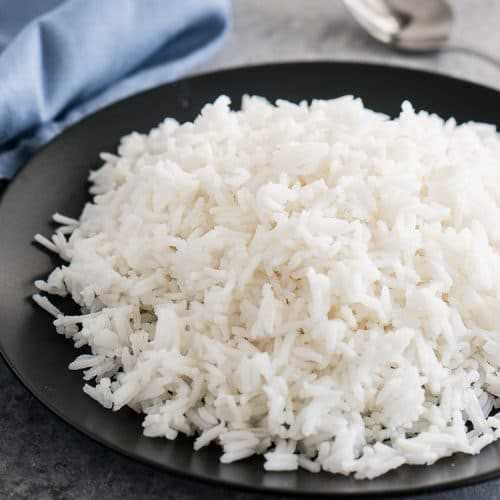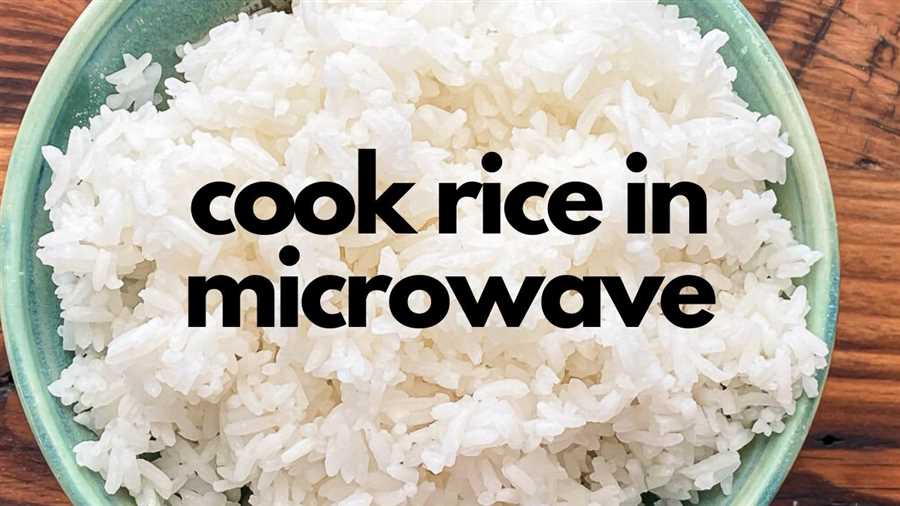When it comes to cooking rice, there are many different methods that people use to achieve the perfect result. One common question that often arises is whether or not it is possible to cook rice uncovered. The answer to this question depends on the type of rice being cooked and the desired texture and consistency.
Uncovering rice while it is cooking can be beneficial for certain types of rice, such as basmati or jasmine rice, which are known for their light and fluffy texture. By cooking these types of rice uncovered, the excess steam is able to escape, which can help prevent the rice from becoming overly sticky or mushy.
However, for other types of rice, such as short-grain rice or sushi rice, it is generally recommended to cook them covered to help retain moisture and ensure an even cooking process. These types of rice typically require a higher ratio of water to rice, and cooking them uncovered may result in the rice drying out or becoming too firm.
Ultimately, the decision to cook rice uncovered or covered depends on personal preference and the desired outcome. Experimenting with different cooking methods and techniques can help determine the best approach for achieving delicious and perfectly cooked rice.
Is it possible to cook rice uncovered?

When it comes to cooking rice, there are different methods and techniques that people use. One common question that arises is whether it is possible to cook rice uncovered. Let’s explore this topic in more detail.
Traditional Method of Covering Rice
Traditionally, rice is cooked by covering it with a lid or a tight-fitting cover. This method helps to trap the steam generated during the cooking process, resulting in evenly cooked rice. The cover helps to create a stable cooking environment and prevents the escape of the steam, which is crucial for cooking rice properly.
Covering rice also helps to retain the moisture inside the pot, preventing the rice from drying out. It allows the heat to circulate evenly, ensuring that the rice cooks evenly and doesn’t stick to the bottom of the pot.
Cooking Rice Uncovered
While the traditional method of cooking rice involves covering it, it is possible to cook rice uncovered. However, there are a few things to keep in mind if you choose to cook rice without a lid.
Firstly, cooking rice uncovered may lead to the loss of moisture, resulting in drier rice. The steam that normally gets trapped under the lid helps to cook the rice evenly and keeps it moist. Without a lid, the steam will escape, potentially causing the rice to become dry.
Secondly, cooking rice uncovered may also affect the texture of the rice. The moisture that is retained with the lid on helps to create a softer and fluffier texture. Cooking rice without a lid may result in a different texture, potentially making the rice harder or stickier.
| Advantages of Cooking Rice Uncovered | Disadvantages of Cooking Rice Uncovered |
|---|---|
| Allows for better control of moisture | May result in drier rice |
| Can create a crispy texture on the bottom layer | May result in a different texture |
| Can prevent overcooking or turning mushy | May require more frequent stirring |
In conclusion, while it is possible to cook rice uncovered, it may not yield the same results as the traditional method of covering it. Cooking rice uncovered may result in drier rice and a different texture. However, it allows for better control of moisture and can prevent overcooking. Ultimately, the choice of cooking method depends on personal preference and the desired outcome.
The benefits of cooking rice uncovered
1. Absorbs excess liquid: When rice is cooked uncovered, it allows the excess liquid to evaporate, resulting in a drier and fluffier end product. This is especially beneficial if you prefer your rice to have a separate grainy texture rather than being sticky.
2. Faster cooking time: Cooking rice uncovered can help speed up the cooking process as the heat is not trapped inside the pot. This is particularly useful when you are in a hurry or need to prepare a meal quickly.
3. Prevents overcooking: By cooking rice uncovered, you can easily monitor the cooking process. This helps prevent the rice from becoming overcooked and mushy, as you can adjust the cooking time accordingly.
4. Creates a crispy crust: Cooking rice uncovered allows the bottom layer of rice to crisp up, creating a delicious golden crust known as “socarrat.” This is a sought-after feature in certain rice dishes, such as paella.
5. Versatility in texture: Cooking rice uncovered allows you to experiment with different textures. By adjusting the amount of liquid and cooking time, you can achieve a range of textures from firm and separate grains to softer and stickier rice.
While cooking rice uncovered offers these benefits, it is important to note that it may also result in quicker moisture loss and potential uneven cooking. Therefore, it is essential to adjust the cooking process and keep an eye on the rice to ensure optimal results.
The drawbacks of cooking rice uncovered

While cooking rice uncovered may seem like a convenient option, it is important to consider the potential drawbacks. Here are a few reasons why cooking rice uncovered might not be the best choice:
1. Loss of moisture
When rice is cooked uncovered, moisture is continuously evaporated. This can result in dry and hard rice, as the grains lose their natural moisture content. The end result may not be as fluffy and tender as desired.
2. Uneven cooking
Cooking rice uncovered allows heat to escape from the pot, which can lead to uneven cooking. Some parts of the rice may become overcooked, while others remain undercooked. This inconsistency can affect the overall texture and taste of the rice.
3. Increased risk of contamination
Uncovered rice is more susceptible to external contaminants, such as dust, insects, or bacteria. Without a cover, it is easier for these unwanted elements to come into contact with the rice, potentially compromising its quality and safety.
Overall, while cooking rice uncovered may be a time-saving option, it is important to consider the potential drawbacks. To ensure the best results in terms of texture, taste, and safety, it is generally recommended to cook rice covered.
Factors to consider when cooking rice uncovered
1. Water ratio:
When cooking rice uncovered, it is important to consider the water ratio. Generally, when cooking rice uncovered, less water is needed compared to when cooking it covered. It is recommended to use a 1:1.5 ratio of rice to water when cooking rice uncovered. However, this may vary depending on the type of rice and personal preferences.
2. Evaporation:
When rice is cooked uncovered, the water evaporates more quickly. This can result in the rice becoming dry if it is not monitored closely. It is important to keep an eye on the rice and add additional water if necessary to prevent it from drying out.
3. Cooking time:
When cooking rice uncovered, the cooking time may be shorter compared to when cooking it covered. The rice absorbs water more quickly and may become tender faster. It is important to check the rice regularly to avoid overcooking it.
4. Texture:
Cooking rice uncovered can result in a different texture compared to when it is cooked covered. The rice may be drier and have a slightly more firm texture. This can be desirable for certain dishes or personal preferences.
5. Flavors:
Cooking rice uncovered allows the flavors to develop and intensify more compared to when it is cooked covered. This can result in a more flavorful rice dish. However, it is important to be mindful of the seasonings and ingredients added to the rice to avoid overpowering flavors.
In conclusion, cooking rice uncovered can be a good option if you prefer a drier, more firm texture and more intense flavors in your rice dish. However, it is important to consider the water ratio, evaporation, cooking time, texture, and flavors to ensure the best results.
Tips for successfully cooking rice uncovered
Cooking rice uncovered can be a great way to achieve a fluffy and perfectly cooked batch. Although it may seem unconventional, cooking rice without a lid allows for better moisture evaporation, resulting in a drier and less sticky consistency.
Follow these tips for the best results:
- Measure the rice and water accurately. Use a 1:2 ratio, meaning 1 cup of rice to 2 cups of water.
- Rinse the rice before cooking to remove excess starch. Place the rice in a sieve and rinse it under cold water until the water runs clear.
- Choose the right pot. A wide and shallow pot can help facilitate faster moisture evaporation during cooking.
- Add salt or other seasonings according to your taste preferences before cooking the rice.
- Bring the water and rice to a boil over medium heat while stirring occasionally.
- Once the water reaches a full boil, reduce the heat to low and let the rice simmer uncovered.
- Keep an eye on the rice and stir occasionally to prevent sticking to the bottom of the pot.
- Cook the rice for the recommended amount of time. The time may vary depending on the type of rice you are using.
- When the rice is cooked, remove it from the heat and let it rest for a few minutes before fluffing it with a fork.
- Serve the rice immediately or transfer it to a covered container to keep it warm until ready to serve.
Remember that cooking rice uncovered may result in faster moisture evaporation, so it is important to monitor the cooking process closely to avoid overcooking or burning the rice. With practice, you can master the technique and enjoy perfectly cooked rice every time.
Questions and answers
Can you cook rice uncovered?
Yes, you can cook rice uncovered but it may lead to uneven cooking and loss of moisture. It is recommended to cover the rice while cooking to ensure even cooking and to retain moisture.
What happens if you cook rice uncovered?
If you cook rice uncovered, it may result in uneven cooking as the steam and heat will escape more readily. This can lead to some grains being undercooked while others are overcooked. Additionally, cooking rice uncovered may cause the rice to dry out and result in a less fluffy texture.
Should I cover the rice while cooking?
Yes, it is generally recommended to cover the rice while cooking. By covering the rice, you trap the steam and heat, which helps the rice cook evenly and prevents the loss of moisture. This results in fluffy and tender rice.
Can I leave the lid of the rice cooker off?
It is not recommended to leave the lid of the rice cooker off while cooking rice. The lid helps to trap the steam and heat, which are necessary for properly cooking the rice. Taking off the lid can lead to uneven cooking, longer cooking time, and a less desirable texture of the rice.
Is it necessary to cover the rice with a lid?
Yes, it is necessary to cover the rice with a lid while cooking. The lid helps to trap the steam and heat, creating a controlled environment for the rice to cook evenly and absorb moisture. Without the lid, the rice may not cook properly and may become dry or undercooked.






